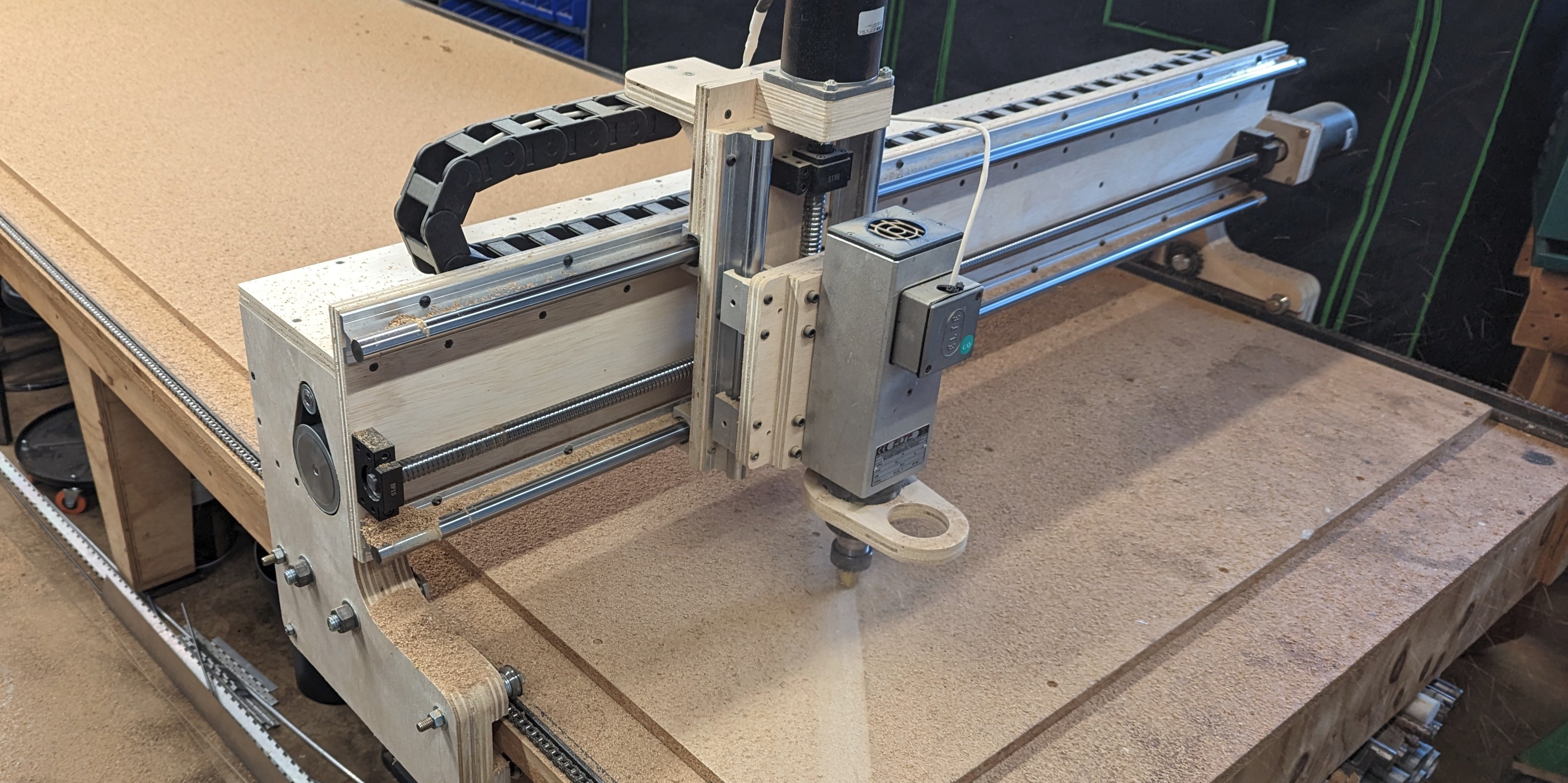
CNC Router Construction
The following is a construction log of the CNC router I designed and built in 2022. Ultimately, these led to my current version, where its plans and construction details can be found at http://worktablecnc.us.
But do not just jump to that page! There is some good information here. Keep going.
Plywood Gantry CNC Router Upgrade
2022 Version
Throughout the years I have explored and developed several CNC design variants, more so than the ones listed above, but a few primary design considerations continue to make it to the top of my list:
-
The CNC table is a work table. There is not enough space in any personal shop to dedicate solely to a CNC router. The CNC part of it must be able to be out of the way.
-
Rigidity and accuracy is more important than speed. To build a rigid structure out of plywood is not difficult, the main inaccuracy originates from the stepper motor. A stepper motor is great for precise positioning, but it does not provide a holding force until you rotationally displace it a bit. So motors should be geared down to minimize this effect. Direct-drive rack, chain, or belt is not adequate. If that makes the CNC slower on rapid movements so be it.
-
If you can afford it, do not use a router. Use a spindle driven by a VFD. Half the time the CNC is drilling holes, half the time it is routing. A spindle is able to be slowed down to drill bit speeds, a router can not.
-
Using commodity hardware available from multiple manufacturers is important. Nothing proprietary. Keep it easy to build, easy to find parts, easy to fix.
With these and dozens of other wish-list items, I upgraded the plywood CNC design.
Below you can see the 2009 version and the 2022 version with the following upgrades...
Linear Rail Upgrade
The linear rails on the gantry and head axes were upgraded from V-groove bearings to linear guide rails. The linear guide rails have tighter tolerances, ride on ball bearings, and are easily available in complete sets. Just bolt them on without any sort of track fabrication (which is the case with V-groove bearings).
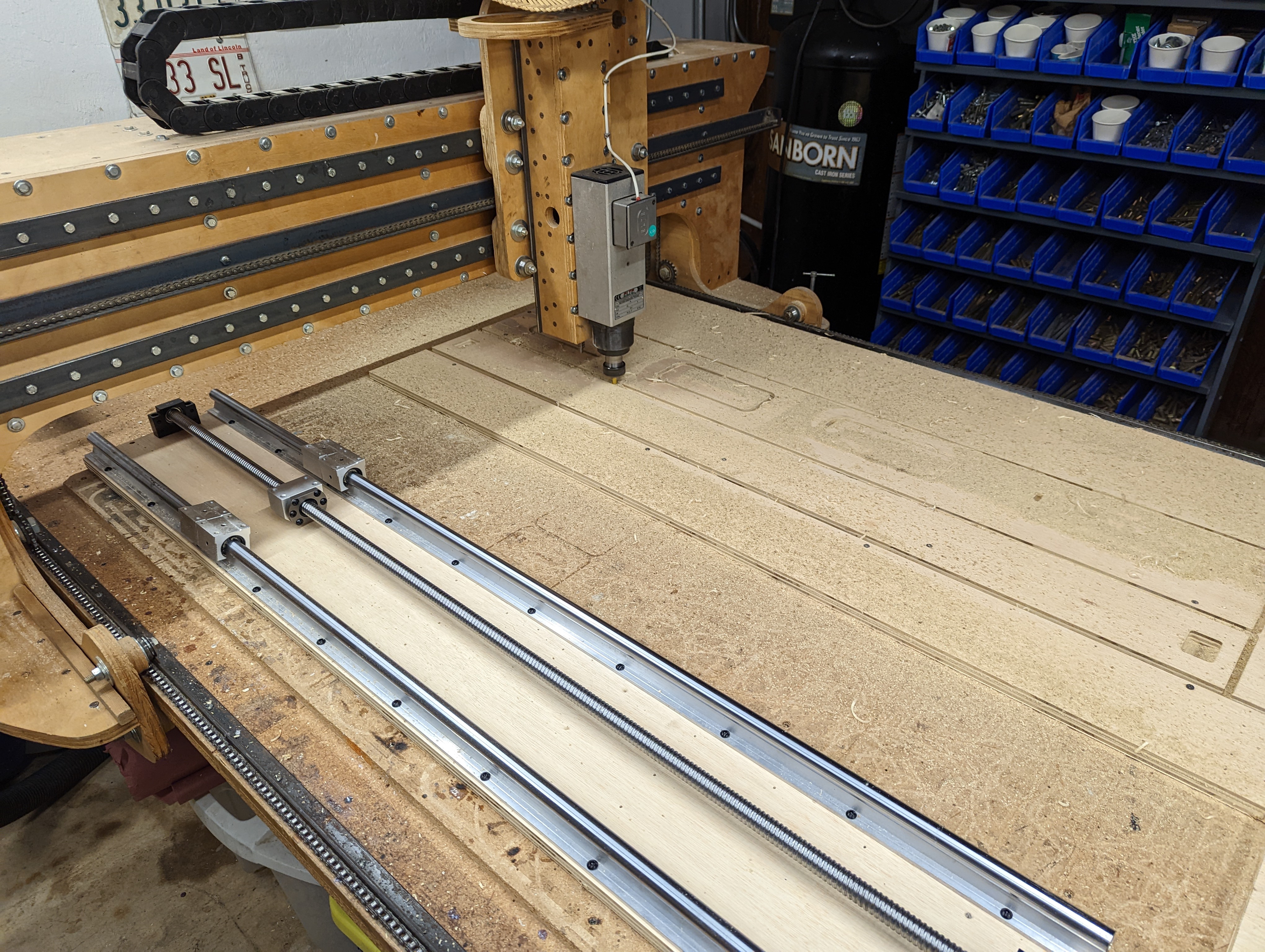
Gantry Structure Upgrade
The plywood box structure was simplified and was reduced in size. This made it easier to build, less obtrusive when not in use, and a bit stronger where it needed to be.
-
The 2009 gantry was bolted. The 2022 gantry was glued and screwed. The reduction in hardware, complexity, and weight was notable.
-
The 2022 gantry ends were glue laminated as opposed to a built up box. This reduced the overhang and provided a thicker section for the bolts holding the V-groove bearings.
-
The overall gantry height was reduced. The beam was still strong enough. More importantly, the guide rails and head axis moved closer to the work reducing the amount of flex thanks to a shorter lever-arm.

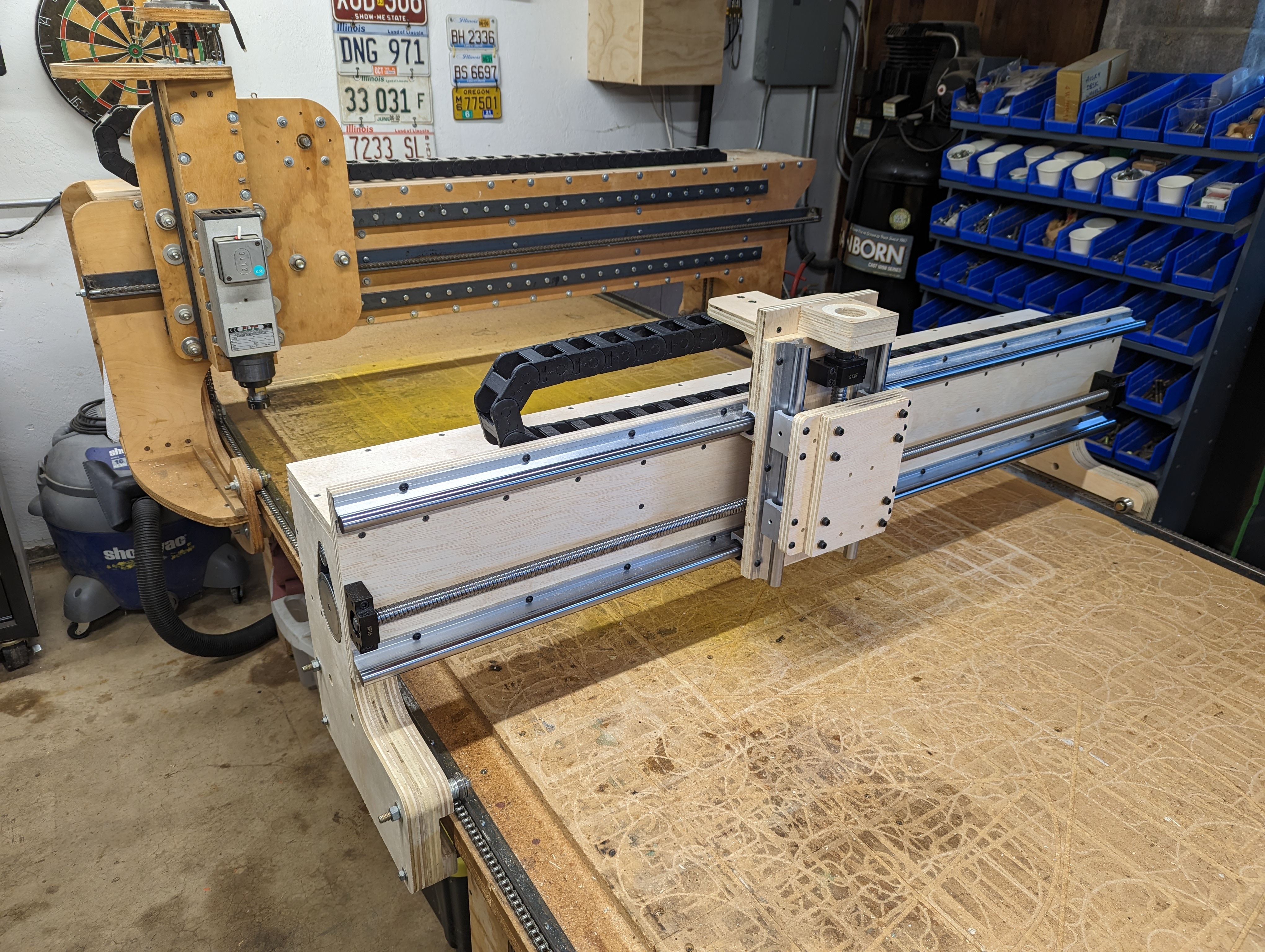
Gantry Drive Upgrade
In an effort to improve precision and rigidity, the drive type was upgraded on all three axes.
-
(X) The table axis stepper motor was geared down using a cog-belt. In the 2009 version the motor was direct-drive to the chain-sprocket system and this did not minimize the stepper motor displacement issue adequately.
-
(Y) The gantry axis was upgraded from direct-drive chain-sprocket to ball-screw. Again, this fixed the stepper motor displacement issue.
-
(Z) The head axis was upgraded from Acme screw to fine-pitch ball-screw. The reduction in friction allowed a notable rapid speed increase.
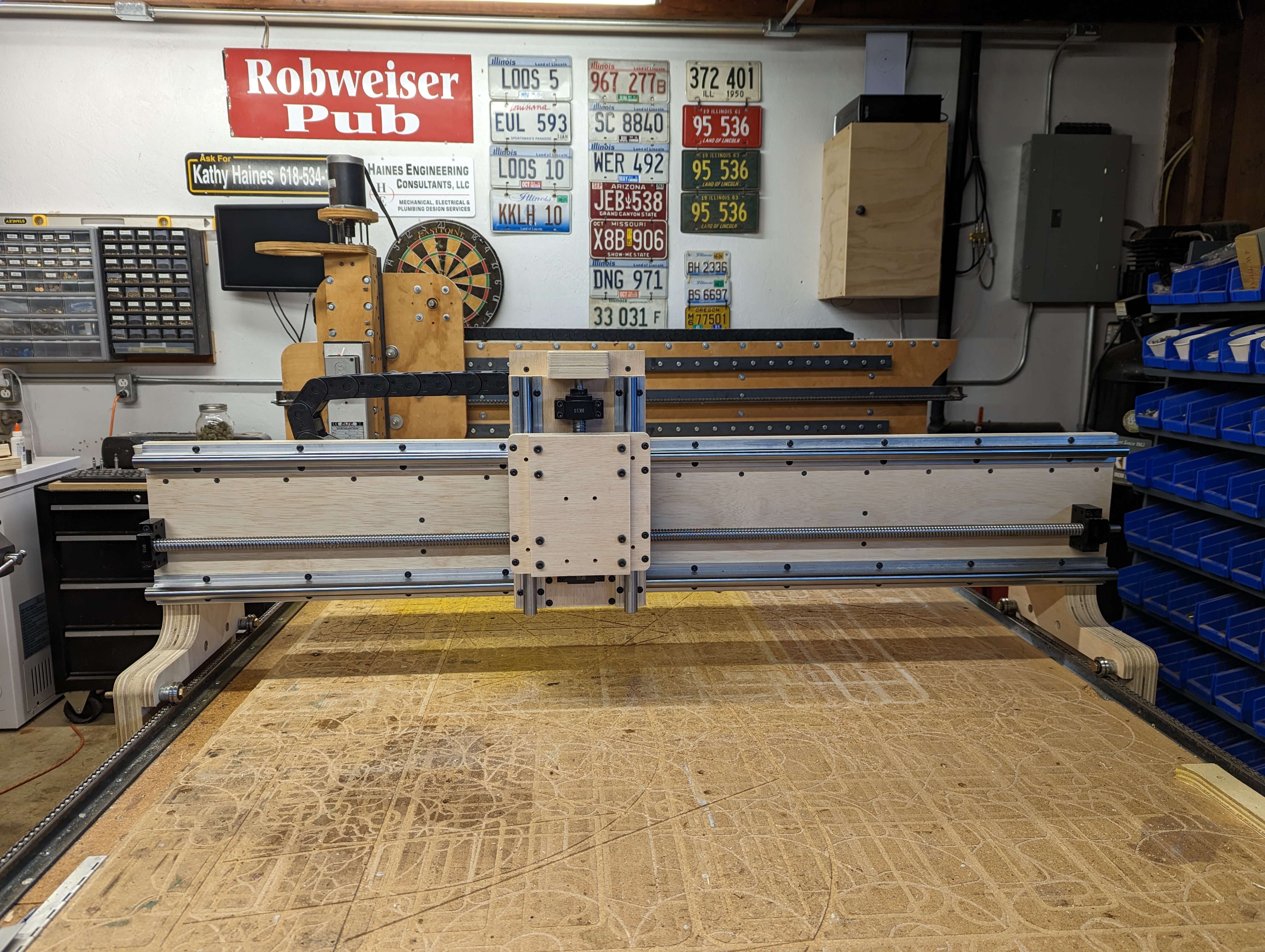
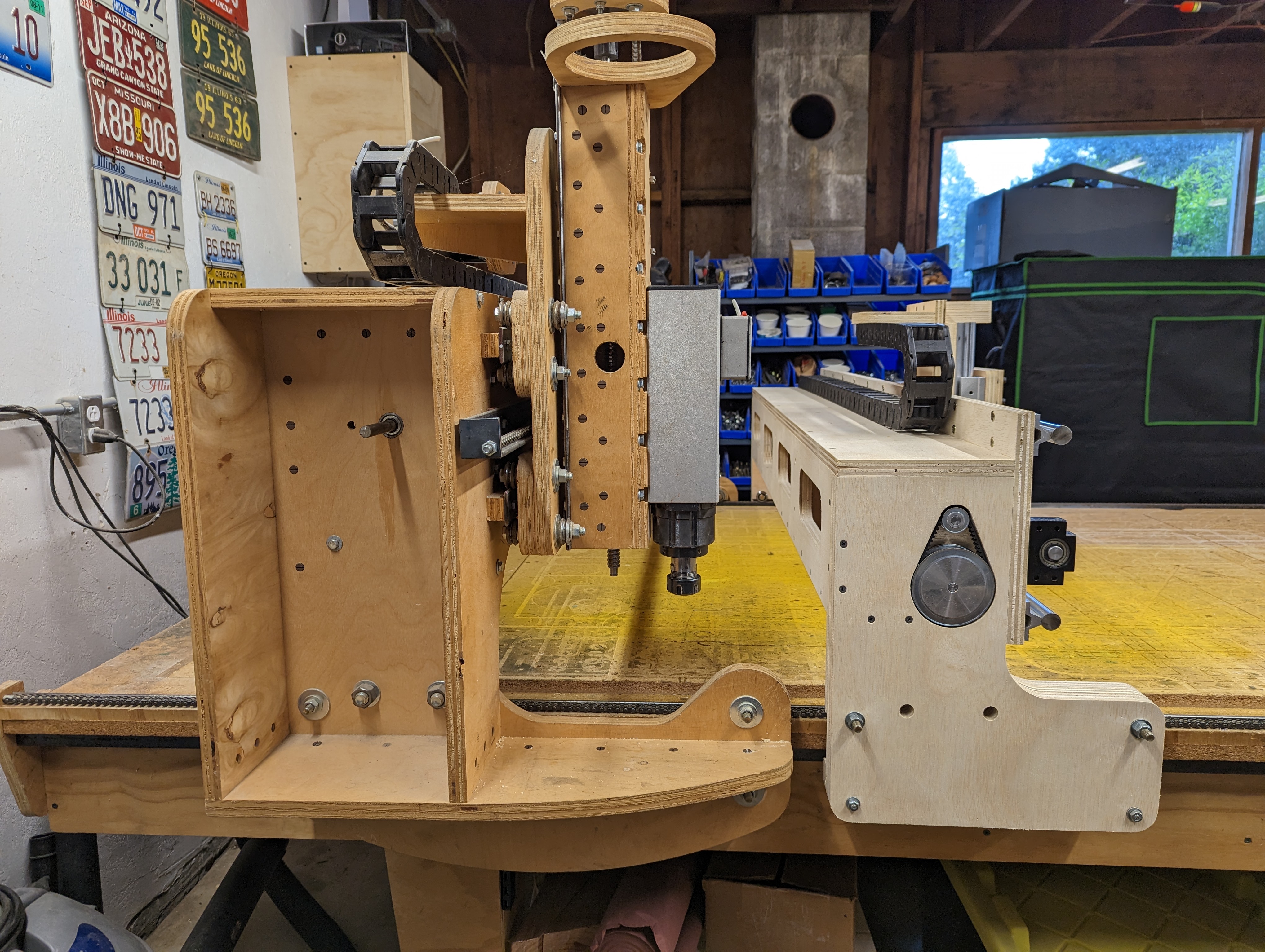
Hardware
As noted before, the 2009 gantry was bolted. The 2022 gantry was glued and screwed. The reduction in hardware, complexity, and weight was notable.
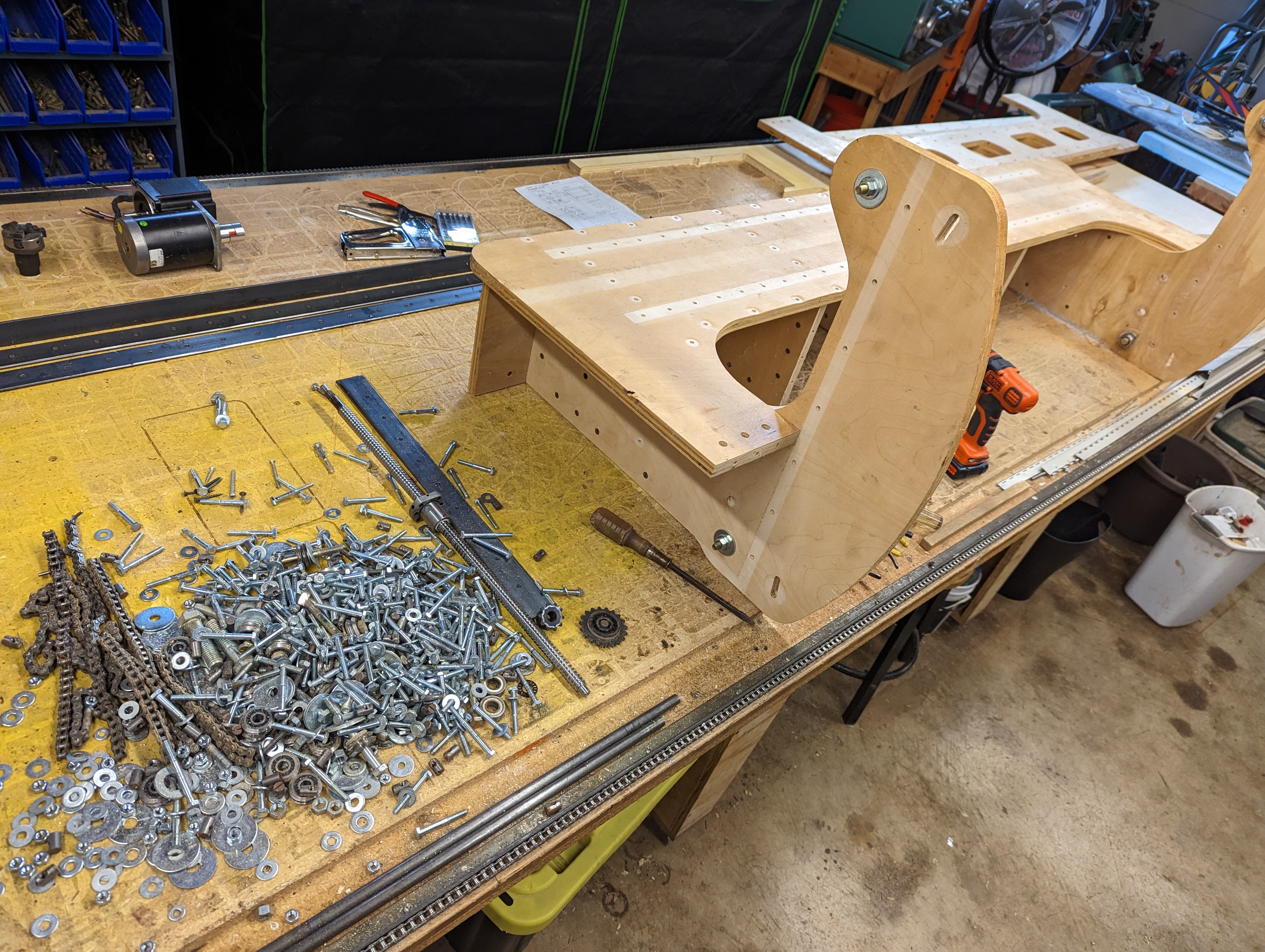
Electronics
The original stepper motor controllers were Gecko Drive G201. Not bad, but defaulted to micro-stepping at 10. The newer Stepper Online stepper drivers had more options, are a bit smoother, and really easy to source.
In the image below, the stepper drivers are to the upper right, the spindle VFD is to the upper left, at the bottom left are the two transformers and two rectifiers, and the breakout board (which was also upgraded after this picture) is to the bottom right. The two 120-12 volt transformers in series provide 24 volt AC, and when rectified and ripple-reduced provides about 32 volts DC.
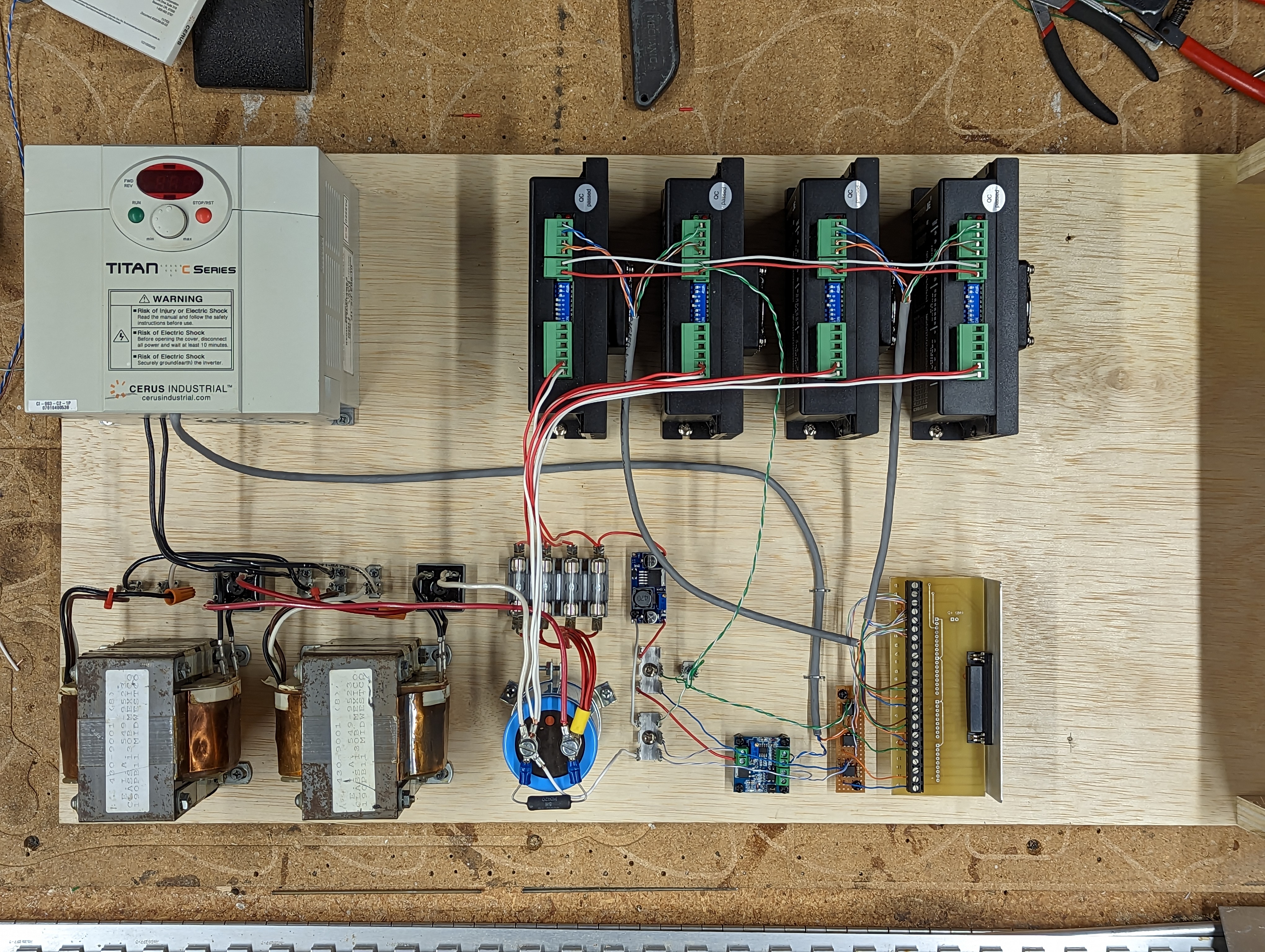

CNC Work Table
The CNC Table is also a worktable! This actually where WorktableCNC gets its name. Unless a CNC is operating continuously (which does not happen in a personal shop) most shops can not afford the floor space to waste on an idle CNC router. So the CNC table does double duty as a general work table.
To allow this:
- The table linear rails and drive system can not be obtrusive.
- When not in use the gantry must be positioned out of the way.
- The table must be at work height.
In the photos below you can see these details.
CNC router in use:
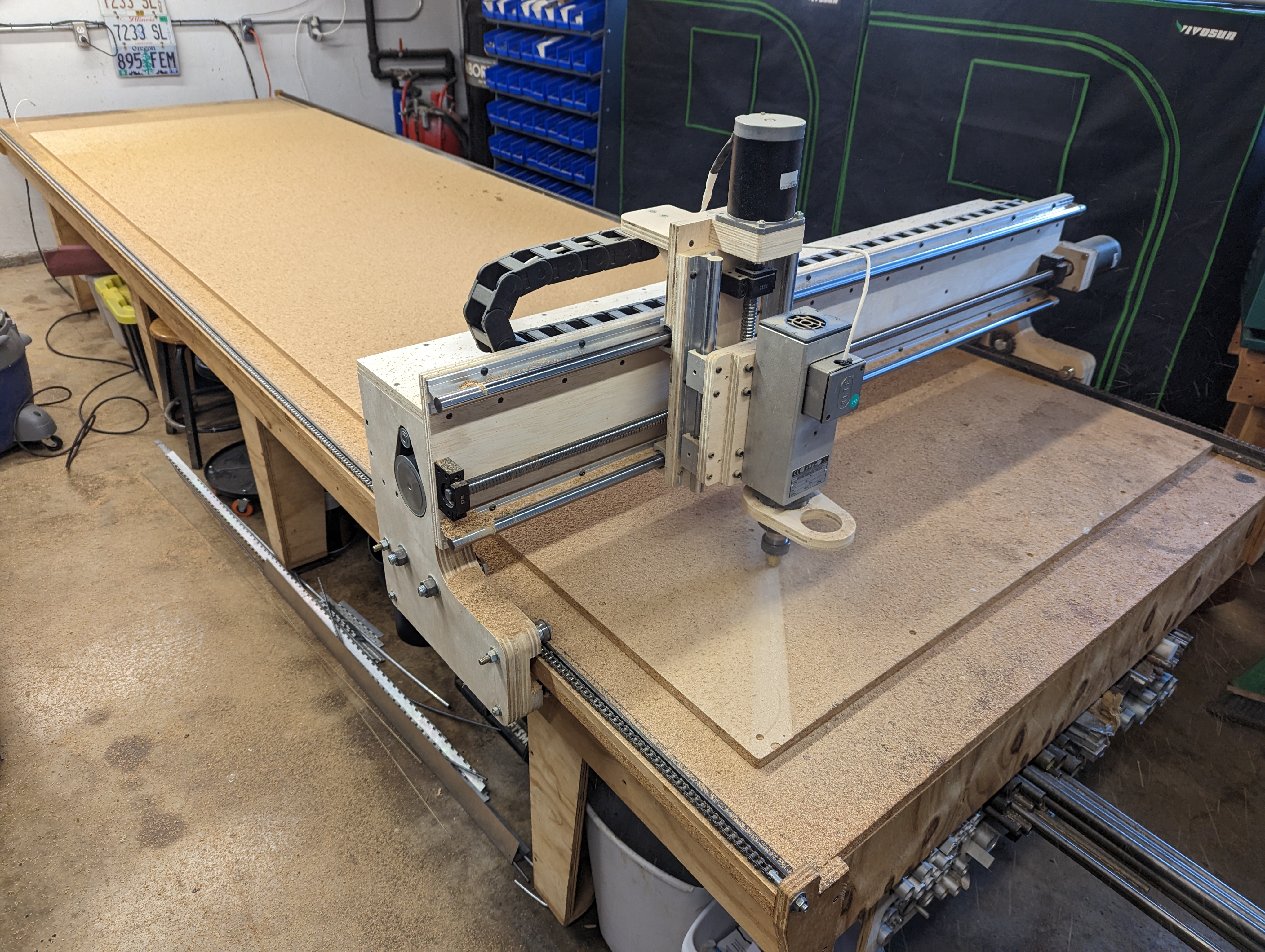
CNC router not in use. Check out all that room!

The worktable with a sheet of foam ready to cut, and the other end can still be used as a work area:
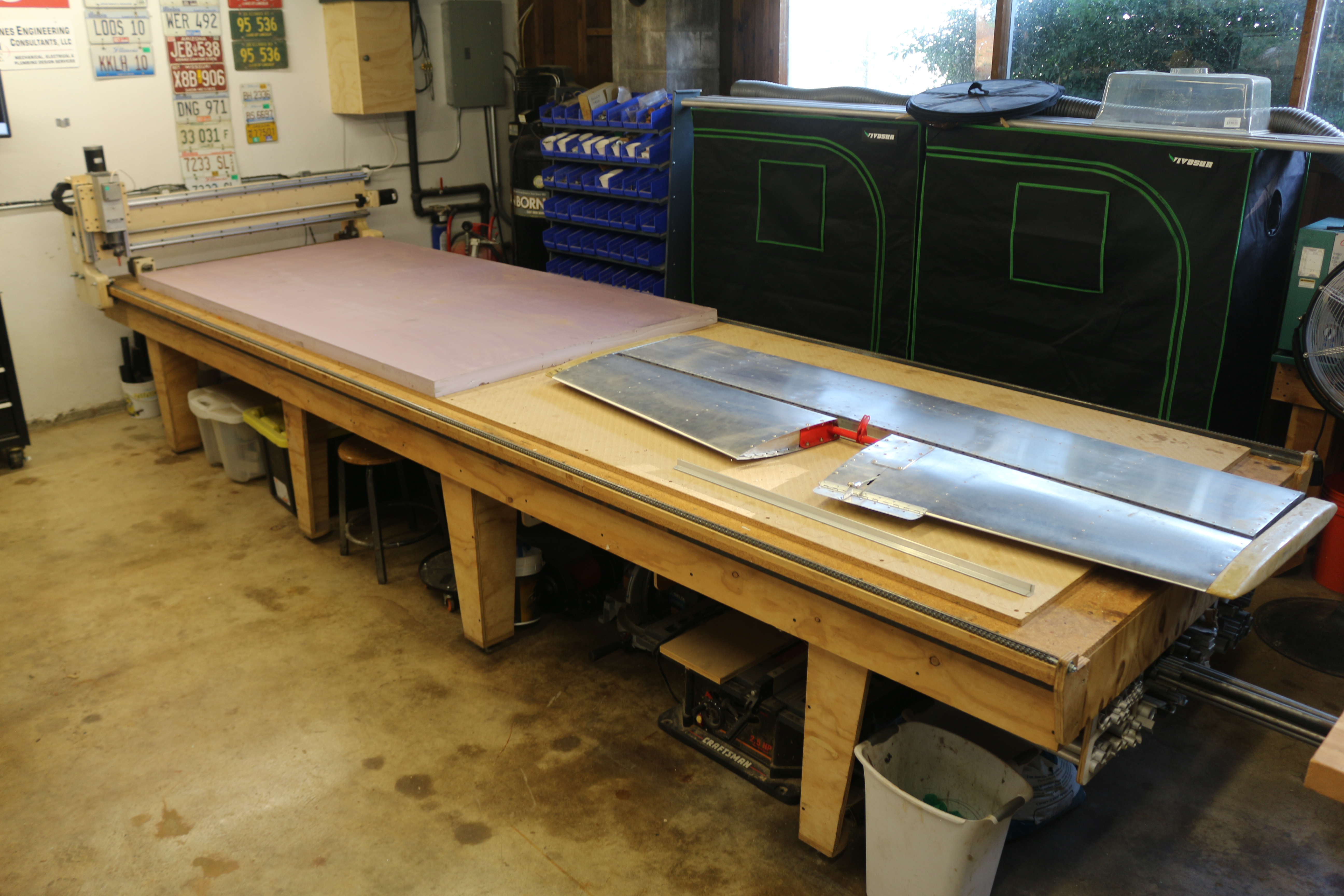
Storing stuff below the table is a must!
If you have a lot of long stuff below the table it is a perfect place to store it:
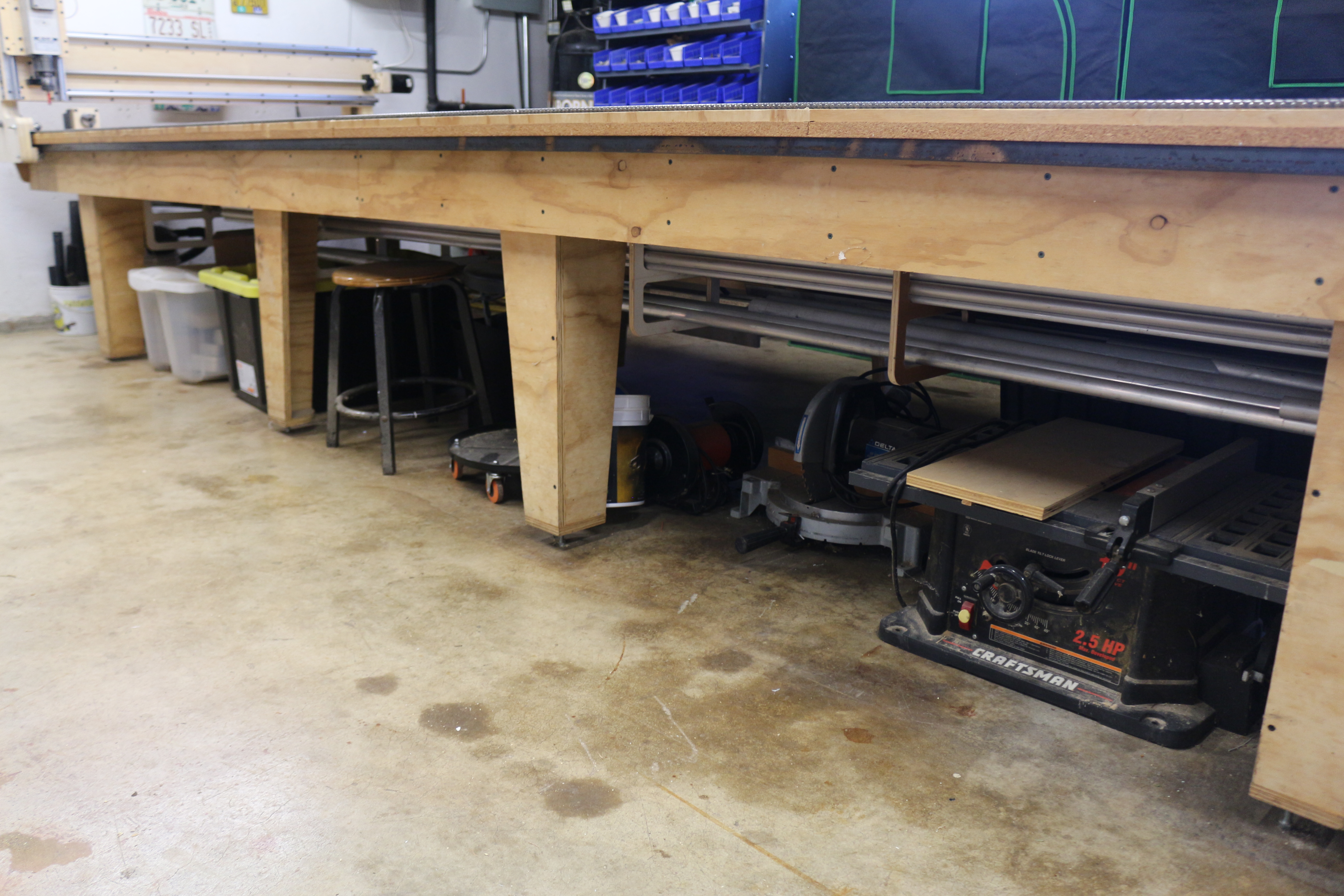
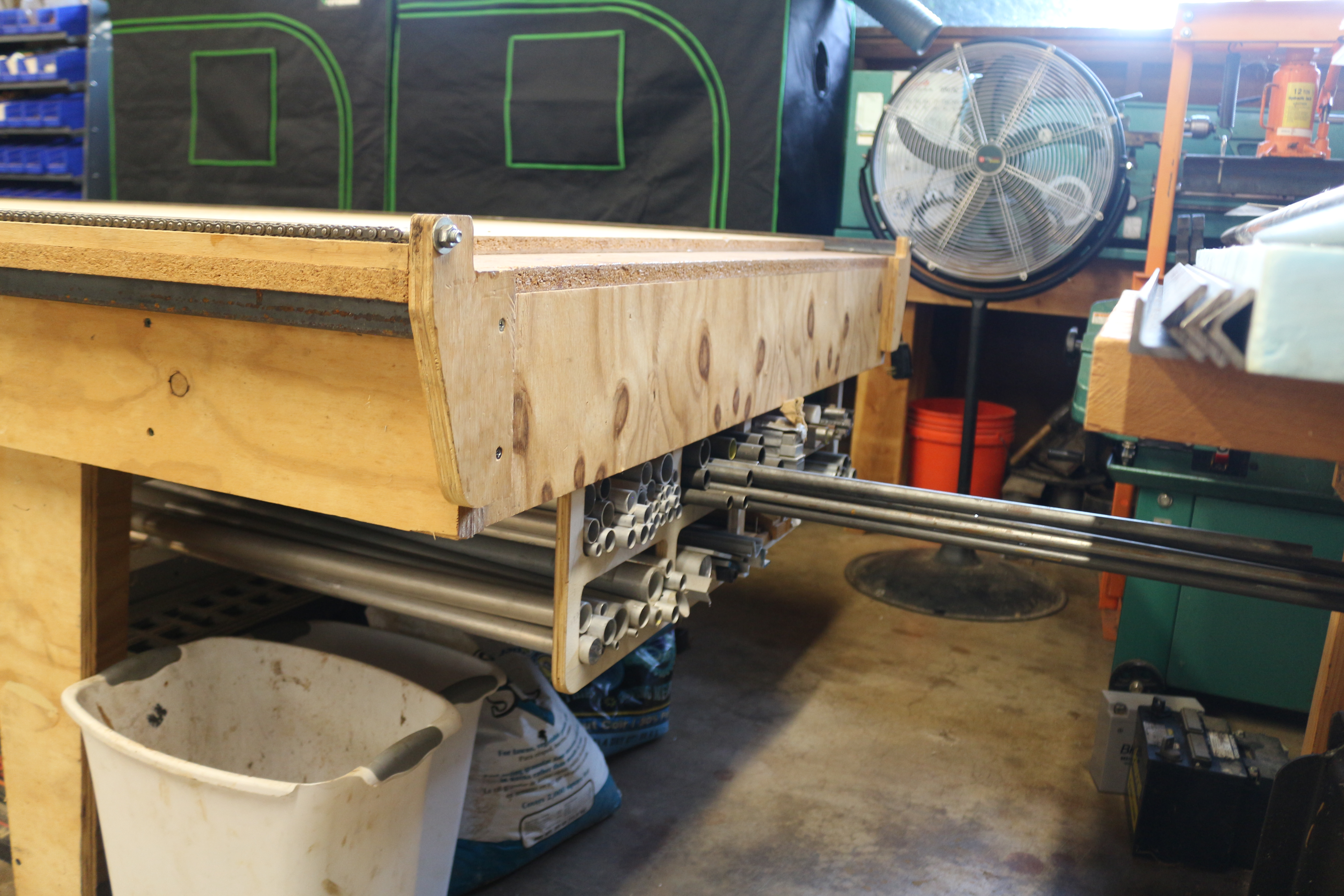
User Interface
Currently I am using LinuxCNC (which uses the parallel port of the PC). A wireless keyboard works well since you can move it to where you need it (for stuff like installing new tools or setting work origins). A wall mounted screen is one less thing in the way.
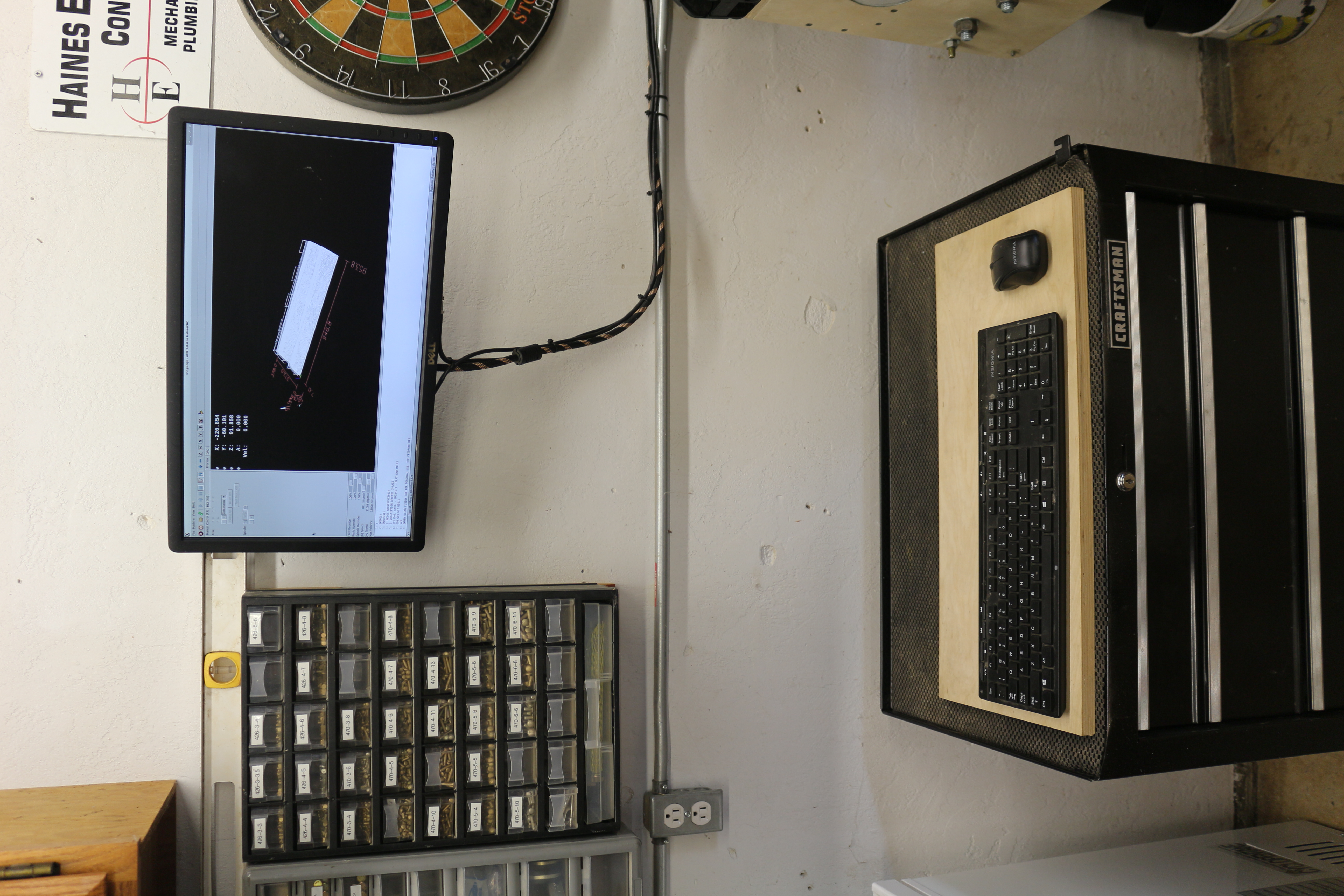
Dust Collection
At a minimum you need some sort of dust collection, even if it only picks up that fine stuff which otherwise floats in the air and wrecks your lungs. When cutting wood I currently use a simple dust boot connected to a shop-vac. This does not get everything on the table, but it keeps the rest of the shop clean. A proper dust collector is on my to-do list!
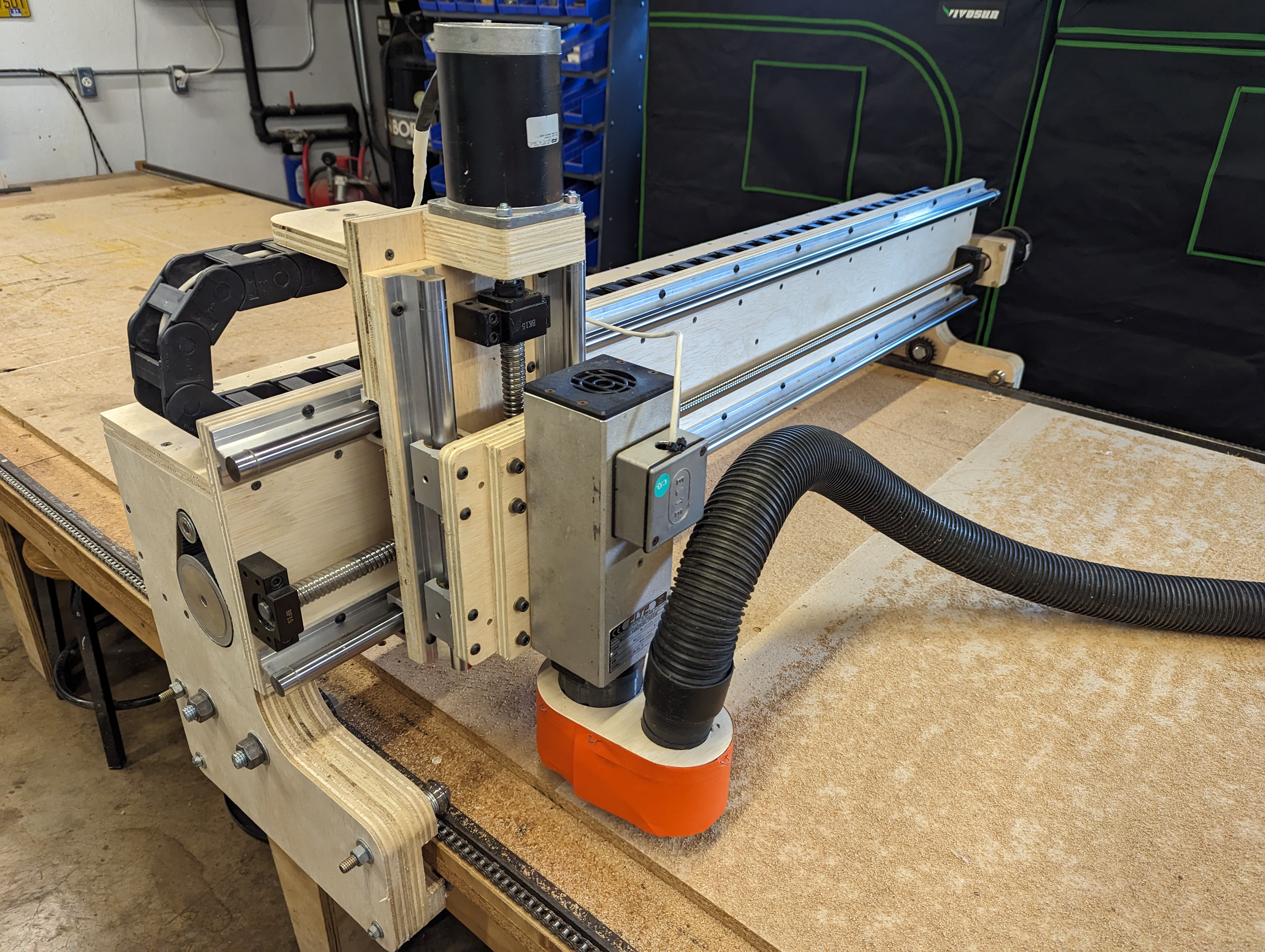
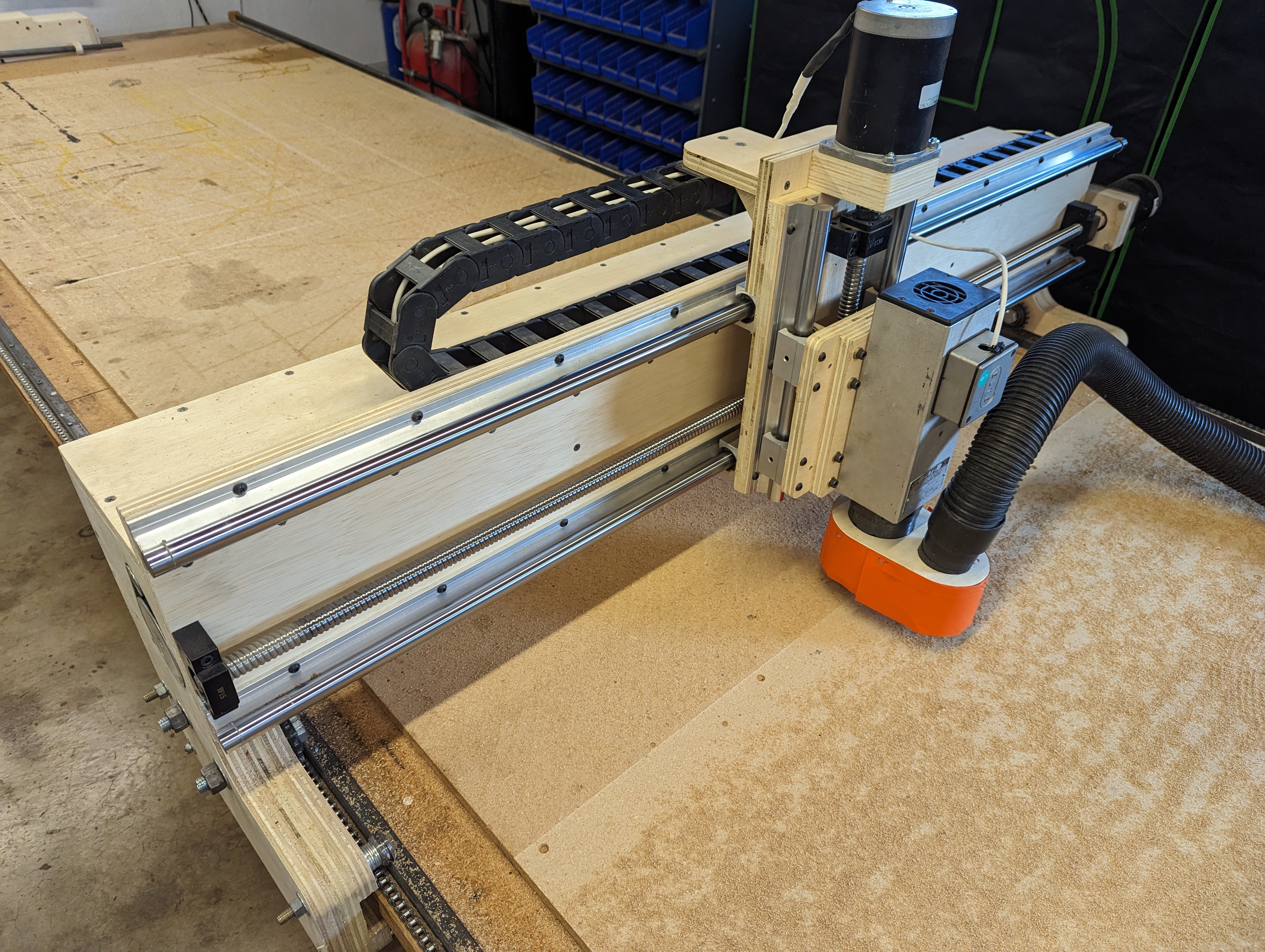
Finally
Just for fun, a little video of the 2022 model flattening the spoil board (yes, the dust collection boot was removed for this video):
This 2022 model is not the end!
Please see https://worktablecnc.us/projects/cnc-build-2025.html for the next build.